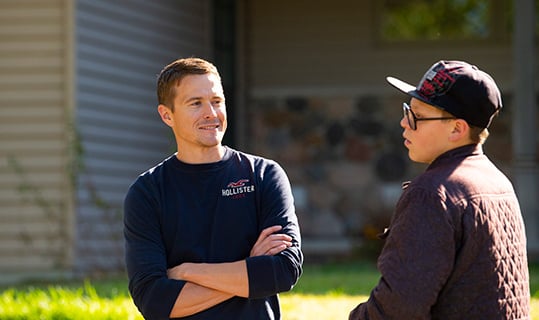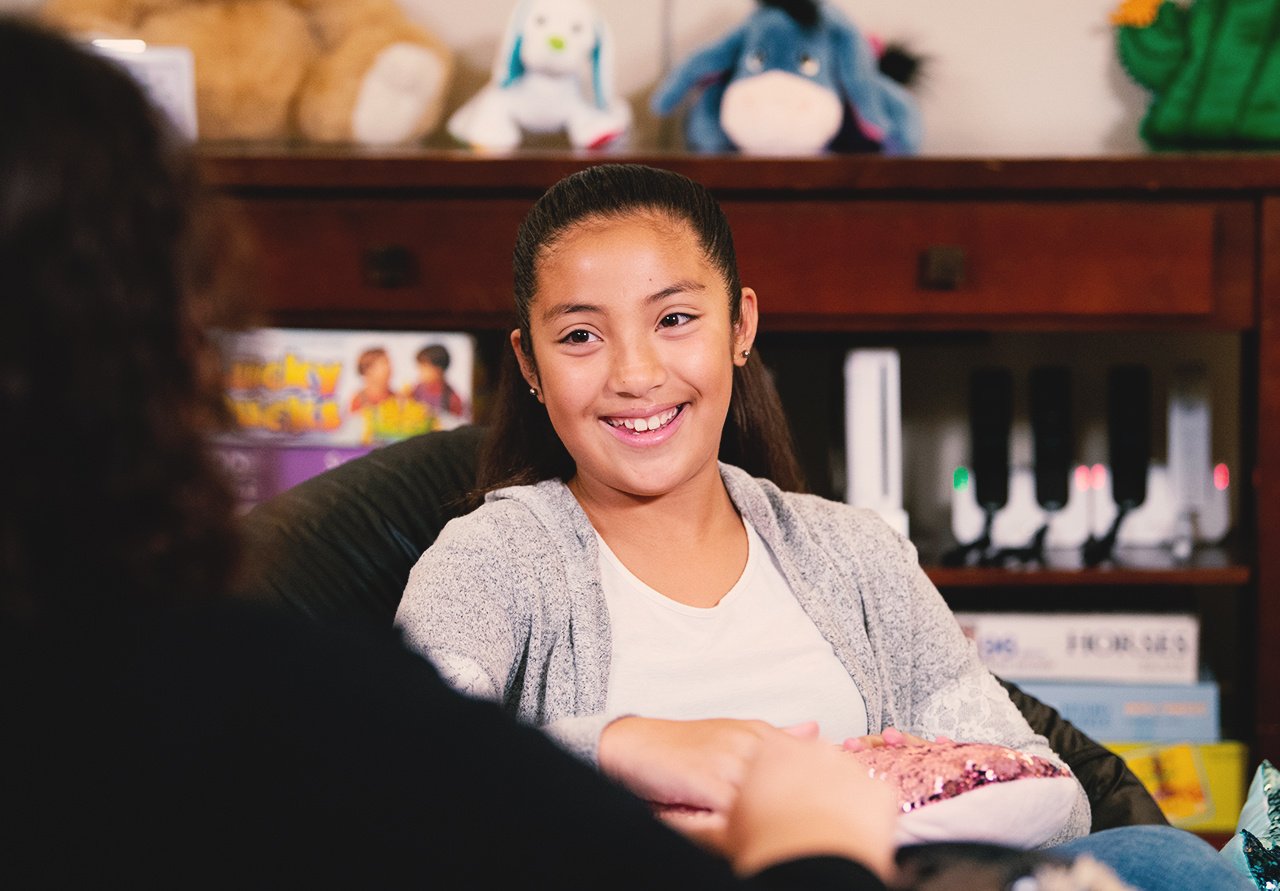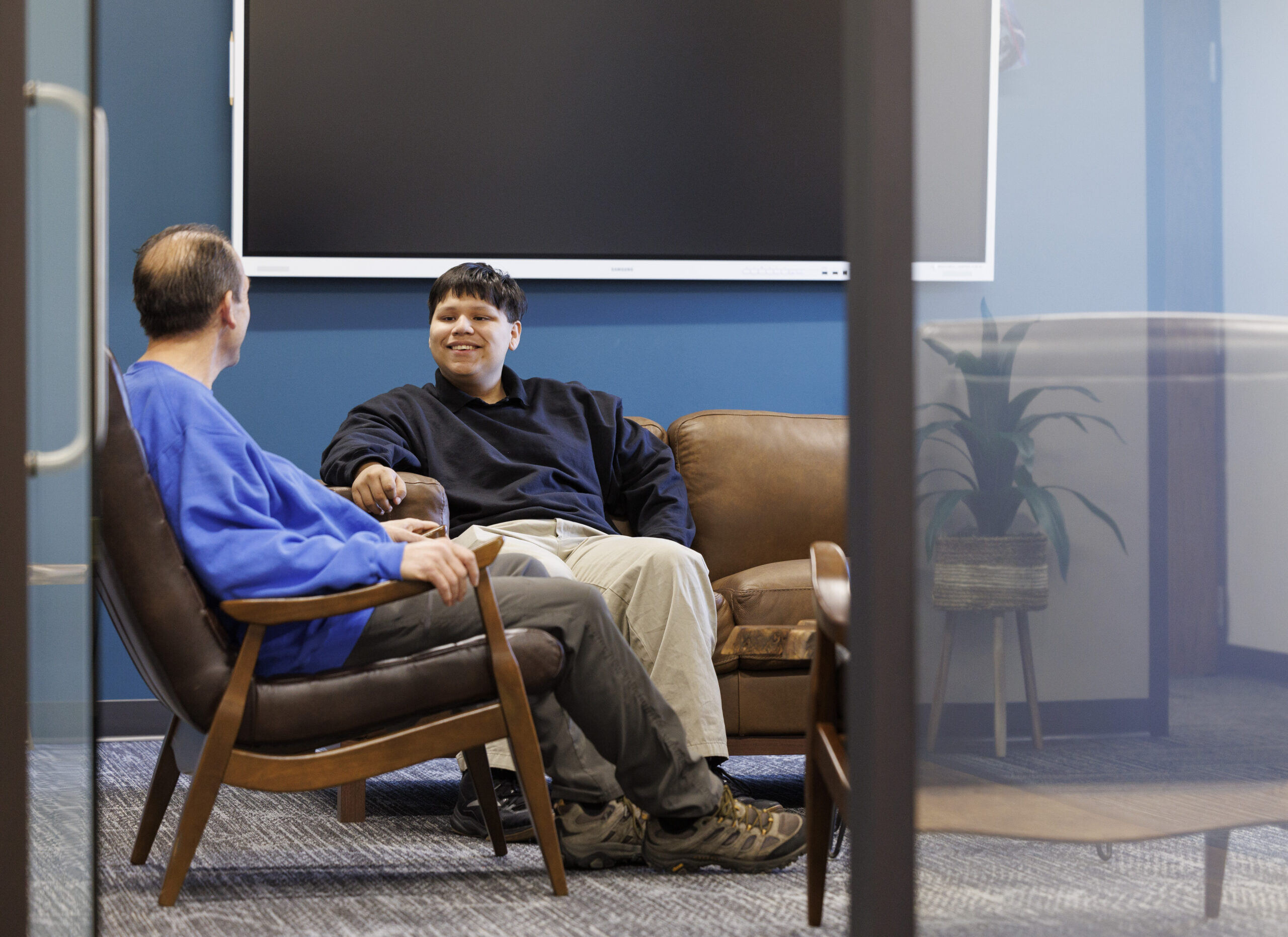.png)
The mental health crisis affecting teens in Wisconsin is a growing concern for parents, educators, and professionals. However, research offers hope: 65% of teens feel comfortable discussing their mental health with those closest to them, and 28% report receiving mental health treatment — an encouraging sign that stigma is gradually breaking.
Therapy is increasingly recognized as an essential tool for helping troubled teens, but there’s no one-size-fits-all approach. Youth often benefit from creative, engaging therapy activities tailored to their unique emotional needs, helping them express emotions, build self-awareness, and develop healthy coping skills.
In this article, we’ll explore various therapy activities for teens, how they help, and how you can encourage your teen’s participation.
Why Teen Therapy Activities Help
The teenage years are well known for rapid emotional, physical, and mental development, and the turbulence can make traditional talk therapy less effective for some teens. Many are uncomfortable expressing their thoughts and feelings verbally, and therapists may face challenges in building trust and engagement early on.
Research suggests that therapy for teens is most effective when it includes developmentally appropriate interventions — activities that meet teens where they are in their emotional intelligence. Giving youth more choice in therapy is also important, as it helps them feel more in control of the process.
Incorporating engaging activities into therapy gives teens creative outlets to express themselves. This approach builds rapport, promotes trust, and helps teens feel understood in a way that traditional talk therapy may not.
10 Engaging Therapy Activities for Teens
Therapy doesn’t have to be a formal sit-down conversation to be effective. Many teens respond better to activities that feel more like play or self-exploration. Below are ten therapy activities designed to encourage emotional growth, self-awareness, and mental well-being.
1. Music Therapy Sessions
Music therapy uses the emotional power of sound to help youth process and express their feelings in a non-verbal way. For those reluctant to talk about their emotions, music offers a creative outlet for emotional release and stress relief. Whether through listening, composing, or performing, music provides a sense of control, helping teens explore their emotions and develop self-awareness.
Try these activities: Teens can create playlists to match different moods, compose original songs, or use instruments to express their feelings. At Rawhide Youth Services, music therapy and a podcast/music studio are offered through our residential care program, making safe spaces for them to navigate their emotional challenges and trauma.
2. Creative Art Projects
Creative art therapy offers teens another non-verbal outlet to explore and express their emotions. This can be particularly helpful for youth who find it difficult to articulate their feelings. Participating in art therapy allows teens to externalize their emotions, promoting healing, self-awareness, and emotional processing in a safe and structured way.
Activity options: Teens can paint, draw, or make collages to express their feelings. They might create art based on guided prompts or freely explore their own ideas. These activities encourage emotional release and provide a space for self-reflection and growth.
3. Mindfulness and Yoga Exercises
Mindfulness and yoga encourage teens to connect with their thoughts and emotions in a gentle, non-judgmental way. These practices help reduce anxiety by promoting relaxation and focus, guiding youth to stay grounded during stressful moments. By combining physical movement with mindful awareness, yoga and mindfulness exercises are excellent tools for emotional regulation and stress management.
Types of activities: Teens can practice simple yoga poses, guided breathing exercises, or mindful meditation to manage stress and increase self-awareness. These activities can be incorporated into daily routines or therapy sessions to foster emotional balance and a sense of calm.
4. Journaling and Letter-Writing Activities
Journaling and letter-writing offer teens a private, structured way to reflect on their emotions and experiences. These activities allow youth to explore their feelings at their own pace, making it easier to process emotional challenges and heal from trauma. Writing provides a safe outlet for self-expression, helping them clarify difficult thoughts and better understand their emotions.
Try these activities: Encourage teens to keep a daily journal, write letters to their future or past selves, or respond to prompts like, “What am I proud of today?” These exercises help build self-awareness and promote emotional growth by setting personal goals and addressing their traumatic experiences.
5. Group Games to Build Trust and Communication
Group therapy games give teens a fun, low-pressure way to develop social skills and connect with their peers. These activities encourage open communication, empathy, and teamwork, all while helping youth feel more comfortable in a group setting. By working together in playful challenges, teens can build trust and improve their ability to relate to others in a relaxed and supportive environment.
Activity options: Popular games like “Two Truths and a Lie” and “Human Knot” promote transparency and trust. These activities are ideal for strengthening communication skills and helping teens build positive relationships in group therapy settings.
6. Animal-Assisted Therapy
Interacting with animals can have a soothing and grounding effect on teens, making it easier for them to manage anxiety and engage in emotional growth. Dogs, horses, and other therapeutic animals offer non-judgmental companionship, providing a safe space for youth to express emotions. Equine therapy, in particular, is known for fostering trust, improving communication skills, and enhancing emotional regulation, offering a hands-on way for teens to process their feelings.
Try this: Rawhide’s equine-assisted therapy program allows youth to build connections with horses, offering a unique experience that encourages personal growth. The physical and emotional benefits of equine therapy can be life-changing for teens who have difficulty talking about trauma, experience suicidal ideation, or worry about being judged for their depression or anxiety. The calming presence of a horse — and the mutual trust between teens and horses — makes it easier to open up about painful issues.
7. Outdoor Adventure Activities
Outdoor adventure therapy integrates physical activity with emotional exploration, offering teens a refreshing way to break free from daily stressors. Being in nature helps youth disconnect from everyday pressures and focus on building resilience, self-confidence, and emotional balance. The physical challenges in outdoor therapy encourage teens to face and overcome obstacles, promoting personal growth in a supportive setting.
Types of activities: Outdoor adventures allow teens to experience a sense of accomplishment, which can positively impact their mental well-being. Hiking, rock climbing, or nature walks help reduce stress while encouraging problem-solving skills and self-confidence. In the winter, snowshoeing, snowboarding, and skiing give teens a healthy way to work through feelings of anxiety and connect with nature.
8. Drama and Role-Playing
Drama therapy gives teens a creative way to explore emotions and practice empathy. By acting out different roles, youth can step into various perspectives, helping them better understand both their own feelings and those of others. Role-playing offers a safe environment for teens to express emotions they may find difficult to communicate, while also allowing them to practice new ways of interacting and expressing their feelings.
Try these activities: Teens can participate in role-playing exercises that simulate real-life situations, such as handling peer pressure or resolving conflicts. These activities help improve emotional expression, encourage empathy, and develop stronger problem-solving strategies.
9. Gratitude Exercises
Gratitude exercises shift teens’ focus from negative thoughts to positive ones, encouraging a more optimistic outlook. Regularly practicing gratitude helps youth improve their mood, build emotional resilience, and reduce anxiety. Recognizing and appreciating the good in their lives gives teens a healthier, more balanced mindset over time.
Activity options: Encourage teens to keep a gratitude journal or create a gratitude map where they list or visually represent things they’re thankful for. These simple activities can have a profound impact on improving emotional well-being and reducing anxiety.
10. Technology-Enhanced Therapy Activities
Incorporating technology into counseling can engage tech-savvy teens by making the process feel more accessible and relatable. Digital tools, such as apps and online platforms outside of social media, give youth a chance to manage their mental health in a familiar way. These tools provide ongoing support and make it easier for teens to integrate therapy into their daily routines.
Try these activities: Teens can use mood-tracking or mindfulness apps like MoveMood, Stop Breathe & Think, and Daylio, or engage in virtual journaling. These tools help make therapy more relatable and offer continuous support both inside and outside therapy sessions.
Tips for Parents and Guardians to Encourage Participation
Encouraging teens to engage in therapy can be daunting, especially when they feel reluctant or unsure about the process. While it’s normal for teens to hesitate, parents and guardians can help create a supportive environment that promotes active participation. By making therapy feel natural and approachable, youth are more likely to open up and start healing.
Here are some practical ways you can encourage your teen to participate in therapy activities:
- Normalize conversations about counseling: Talk openly about mental health in everyday conversations to reduce stigma. The more mental health is discussed as a routine part of self-care, the more comfortable your teen will feel seeking help. You might share stories of public figures who advocate for mental health or mention how therapy has helped people you know.
- Start with familiar activities: If your teen enjoys hobbies like music, art, or physical activity, explore therapy options that incorporate those interests. Starting with something they enjoy helps reduce intimidation and encourages natural engagement. For example, a teen who loves animals might respond well to animal-assisted therapy.
- Lead by example: Show that you value mental health by practicing your own self-care. Whether it’s journaling, mindfulness, or seeking professional help, your openness can model healthy behavior and make it easier for your teen to follow.
- Keep the pressure low: Create an atmosphere where participation in therapy doesn’t feel forced. Instead of framing counseling as something they “have to do,” offer it as a helpful tool for navigating their challenges. When counseling is presented as a beneficial resource, teens are more likely to view it positively and participate willingly.
- Focus on small, manageable steps: Therapy can seem overwhelming at first, so breaking it down into smaller steps can help. Start with short activities like a five-minute mindfulness exercise or a quick journaling session. Gradually, your teen will feel more comfortable with longer sessions and more involved activities.
- Be patient and supportive: Youth counseling programs are a gradual process, and teens may take time to fully engage. Offer gentle encouragement and reassure them that it’s okay to move at their own pace. Your steady support can help them feel more comfortable as they explore therapy.
By following these tips, you can help your teen feel more comfortable with therapy and the activities involved. It’s natural for teens to be cautious at first, but with your support, they’ll gradually become more open to participating in activities that support their emotional and mental health. Patience and understanding will create a safe, low-pressure space where they can explore the benefits of therapy at their own pace.
Creating a Supportive Environment for Teens
Therapy activities for teens are designed to engage them in ways that align with their emotional and developmental needs. Offering a range of therapeutic options helps youth explore their mental health at their own pace while developing crucial coping skills. Whether through creative expression, mindfulness, or outdoor activities, these approaches provide teens with the tools they need to face life’s challenges with greater confidence and self-awareness.
At Rawhide Youth Services, we’re dedicated to supporting youth through programs like equine therapy, music therapy, and more. If you’re seeking guidance or counseling resources to help your teen, contact us today. We’d love to share more about our youth counseling programs and how we can support your family.










